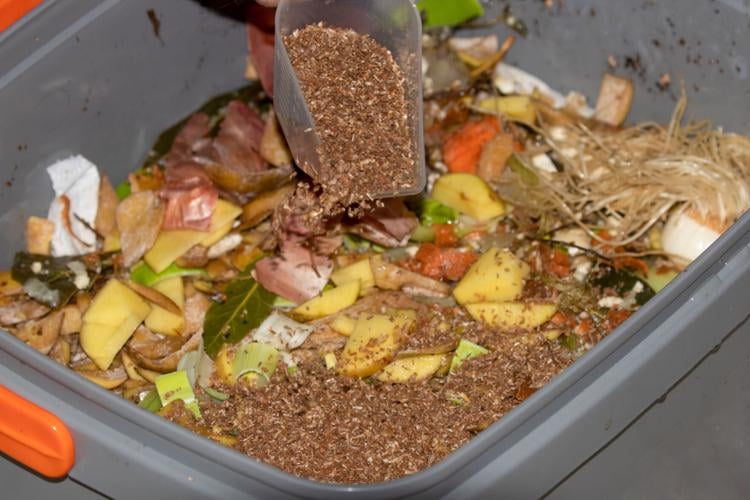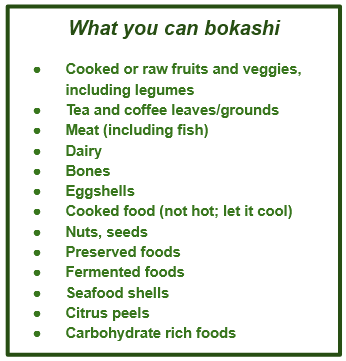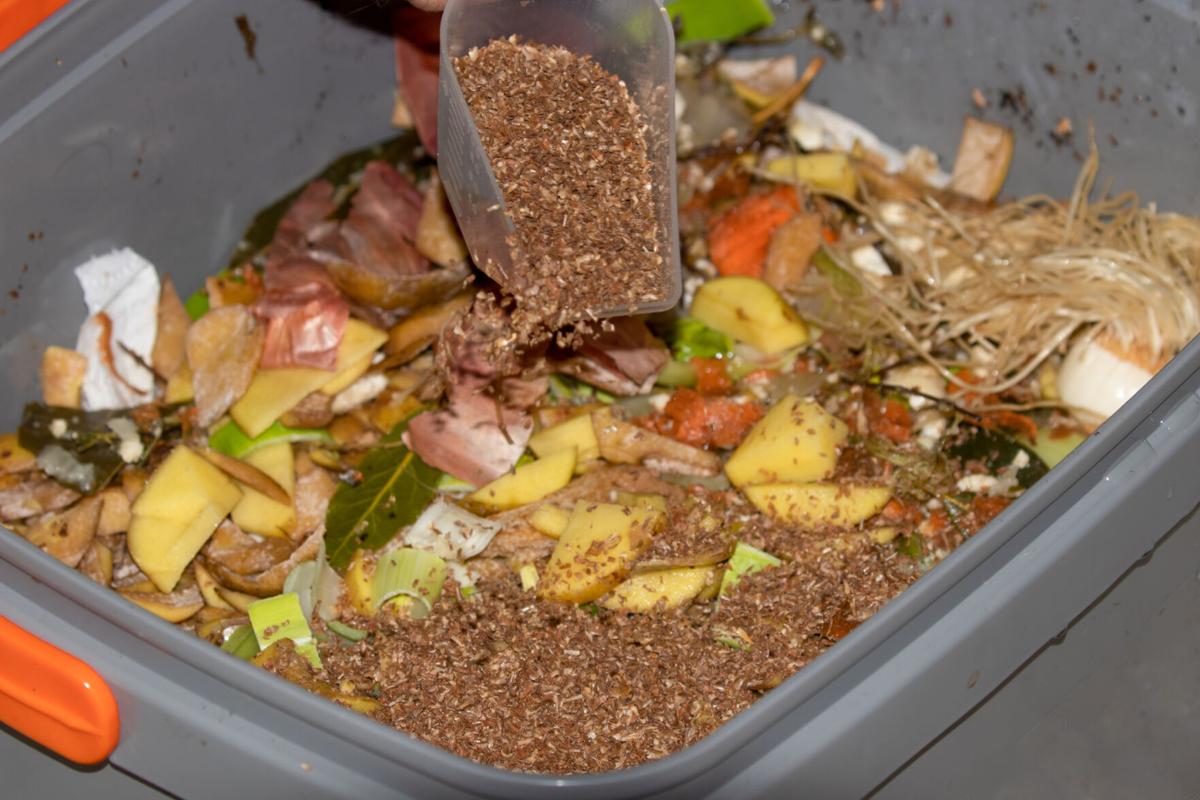If you’re looking for a way to turn nearly all of your food waste into nutritious garden food, bokashi composting is for you.
Bokashi composting is not exactly composting. It’s really fermentation, which is an anaerobic process (i.e. not requiring oxygen). Composting is aerobic (that’s why you need to aerate or turn your compost piles) and for this reason bokashi can process foods that can’t be composted, like meat, dairy, bones, and even seafood shells.
Bokashi originated in Asia, and is widely used in Japan and South Korea, where it likely originated. The process emits no gases, unlike traditional composting. It uses fermentation to digest the food scraps, so odors are very minimal.
Getting started
You will need a bokashi bucket and some bokashi bran. The bucket should be around 5 gallons, airtight, and have a spigot at the bottom for draining off the liquid during the bokashi fermentation process. You can order one or build one yourself. If you DIY, make sure your spigot doesn’t leak. You may want to have two buckets (more on this below).
You will also need the inoculants, which is called bokashi bran. Again, it’s easy to order it. You can also make your own, if you have a lot of time and patience.
Once you have the bran and the bucket, just put it somewhere handy and start adding your food waste. It helps to chop things up into 1- or 2-inch pieces, as they will ferment more quickly. Put in your food scraps along with the bran as you add it to the bucket. Try not to mix it — that will introduce oxygen. You will want to squish it down a bit between additions of food and bran, and cover it with plastic or a plate to further reduce the oxygen exposure.

You can add nearly any food item to bokashi for fermentation. Once fermented, the scraps can be added to your compost pile or buried in a fallow part of your garden.
Once your bucket is full, seal it up with the cover tightly and put it in a warm environment for about two weeks (this is where the extra bucket comes in handy). Every one to two days, use the spigot to drain off the liquid, which is referred to as bokashi tea. This liquid is itself a fairly good nutrient for your garden. Dilute it by about 1:100 (it’s very acidic) and use it to water your plants. It has relatively high levels of phosphorus and potassium, but very low levels of nitrogen (most of the nitrogen is still in the solid portion of the bokashi waste). However, bokashi tea has also been found to contain relatively high levels of salt (sodium and chloride) — possibly due to its addition to cooking. If in doubt, dilute the tea to 1:150.
There are two things you can do with the solid portion of the bokashi waste. You can bury it in your garden, albeit in a fallow portion, as it is too acidic for plants to tolerate and it will take a few weeks for little soil critters to further break down the waste. Or (in my opinion the easier option), you can put it on your compost pile. Because the bokashi waste is partly broken down, it will decompose considerably faster than it would via traditional composting (as in, weeks faster). And because the bokashi process digests protein-rich food wastes such as meat and dairy, it allows you to make full use of your food waste without dealing with foul smells.
Speaking of smells, people who do bokashi have reported that they only smell sour — sort of like nuclear sauerkraut — and only when they open the bins. Most of the time you won’t smell anything, since the bin is airtight. If you do notice a foul odor, or if you see black, green or blue mold (white is OK), you need to toss that batch in the trash, wash out the bucket, and start again.
Sustainable gardens have a very positive impact on the environment and local wildlife.






